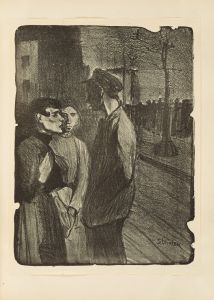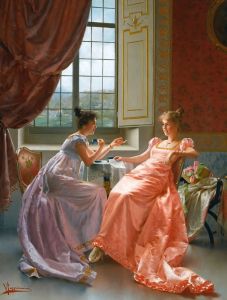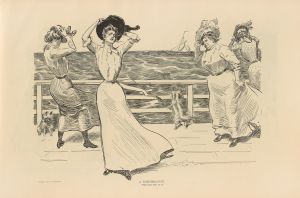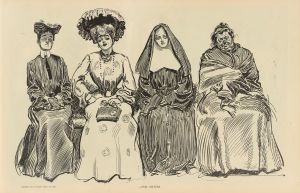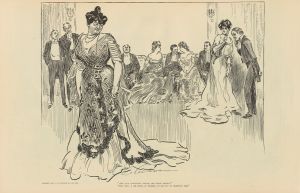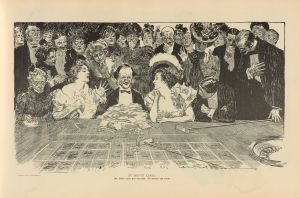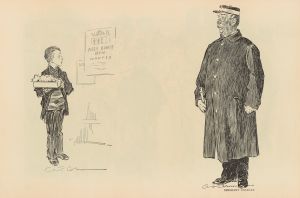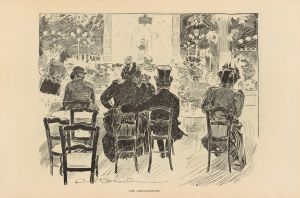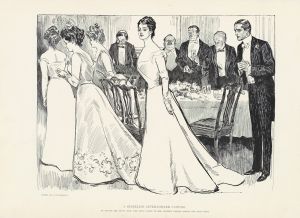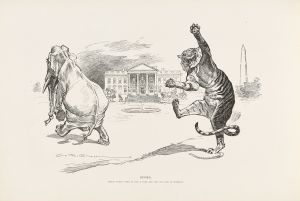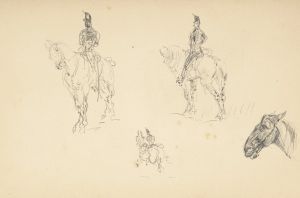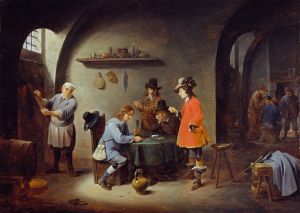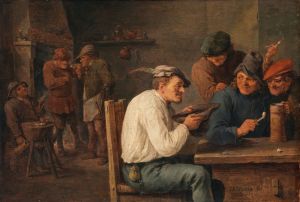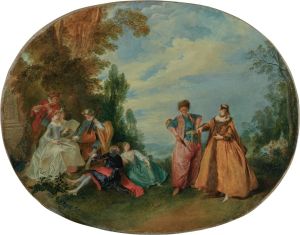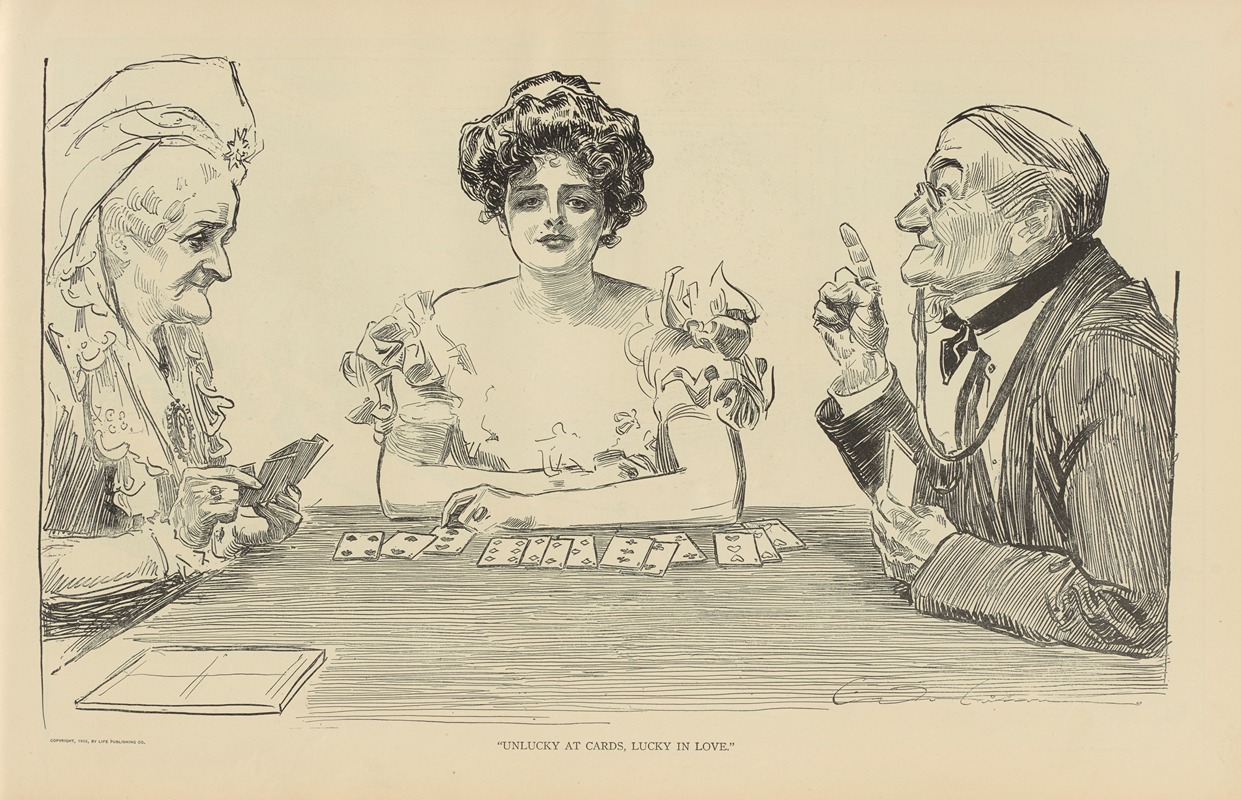
Unlucky at cards, lucky in love
A hand-painted replica of Charles Dana Gibson’s masterpiece Unlucky at cards, lucky in love, meticulously crafted by professional artists to capture the true essence of the original. Each piece is created with museum-quality canvas and rare mineral pigments, carefully painted by experienced artists with delicate brushstrokes and rich, layered colors to perfectly recreate the texture of the original artwork. Unlike machine-printed reproductions, this hand-painted version brings the painting to life, infused with the artist’s emotions and skill in every stroke. Whether for personal collection or home decoration, it instantly elevates the artistic atmosphere of any space.
"Unlucky at Cards, Lucky in Love" is an illustration by Charles Dana Gibson, an influential American graphic artist best known for his creation of the "Gibson Girl," a representation of the idealized American woman at the turn of the 20th century. Gibson's work was widely published in magazines such as Life, Harper's Weekly, and Scribner's, and he became one of the most celebrated illustrators of his time.
The phrase "Unlucky at cards, lucky in love" is a well-known proverb suggesting that misfortune in gambling or games of chance is often balanced by success in romantic endeavors. This theme was a popular subject in the late 19th and early 20th centuries, reflecting societal attitudes towards luck, love, and leisure activities. Gibson's illustration captures this sentiment, likely depicting a scene where the characters experience contrasting fortunes in cards and romance.
Gibson's illustrations often featured elegant, fashionable men and women in social settings, and "Unlucky at Cards, Lucky in Love" is no exception. His work is characterized by its detailed pen-and-ink technique, capturing the nuances of expression and the subtleties of social interaction. The Gibson Girl, in particular, became an iconic image, symbolizing independence, confidence, and beauty. She was often portrayed in various scenarios, from leisurely activities to more dynamic social engagements, embodying the changing roles of women during that era.
The cultural context of Gibson's work is significant. During the late 19th and early 20th centuries, America was undergoing rapid social and economic changes. The rise of the middle class, increased leisure time, and the evolving roles of women were reflected in the popular media of the time. Gibson's illustrations, with their focus on social scenes and interactions, provide a window into the values and aspirations of this period.
"Unlucky at Cards, Lucky in Love" would have been part of this broader cultural narrative, illustrating the interplay between chance and romance in a society increasingly fascinated by both. While specific details about the illustration's publication or reception are not readily available, it can be assumed that it resonated with audiences familiar with Gibson's style and the themes he frequently explored.
Gibson's legacy as an illustrator is significant. His work not only captured the essence of an era but also influenced the development of American illustration and popular culture. The Gibson Girl, in particular, left a lasting impact, shaping perceptions of femininity and fashion well into the 20th century.
In summary, "Unlucky at Cards, Lucky in Love" by Charles Dana Gibson is an illustration that embodies the themes of chance and romance, set against the backdrop of early 20th-century American society. Gibson's skillful depiction of social scenes and his creation of the iconic Gibson Girl have cemented his place in the history of American art and illustration.





